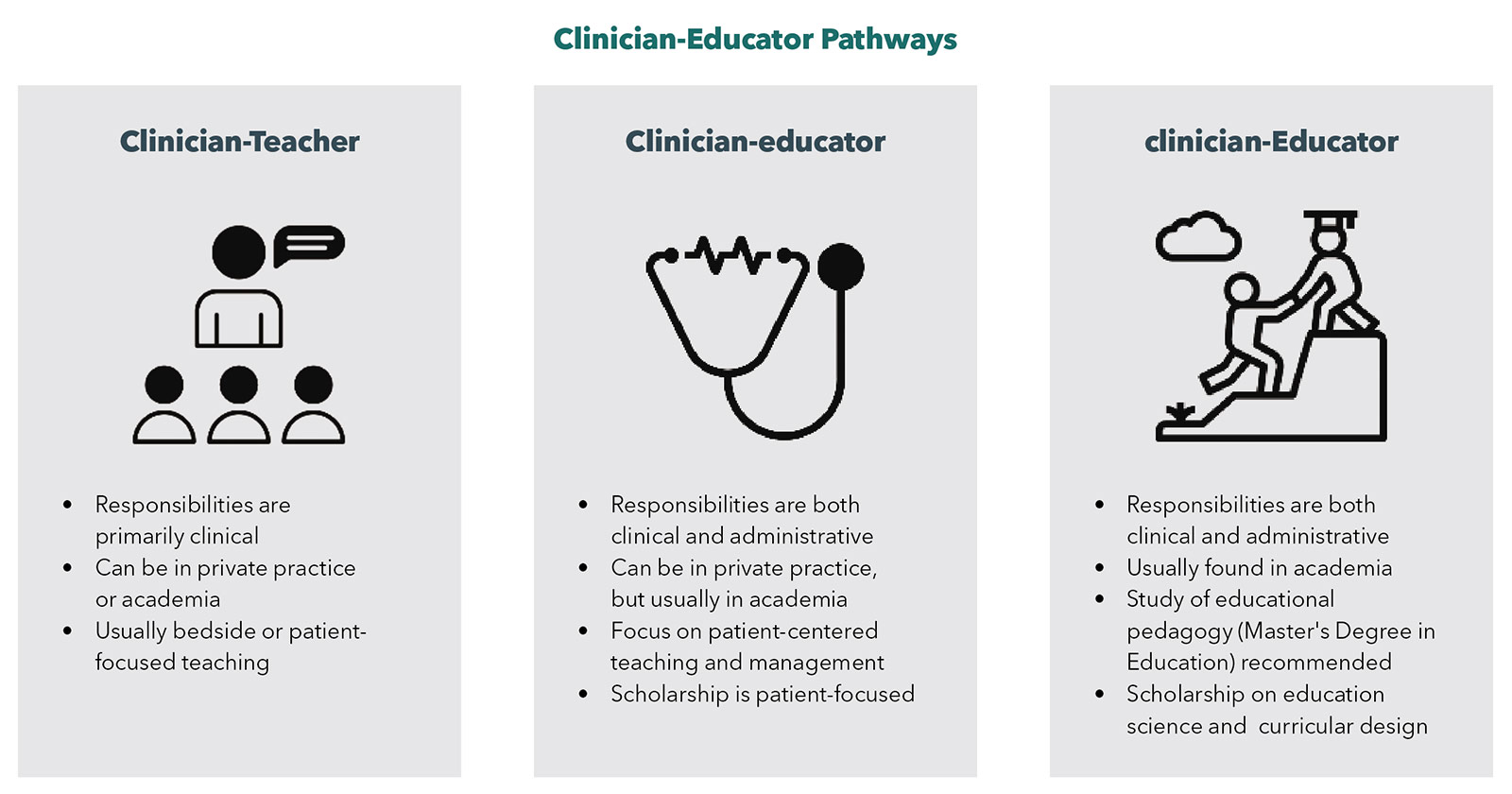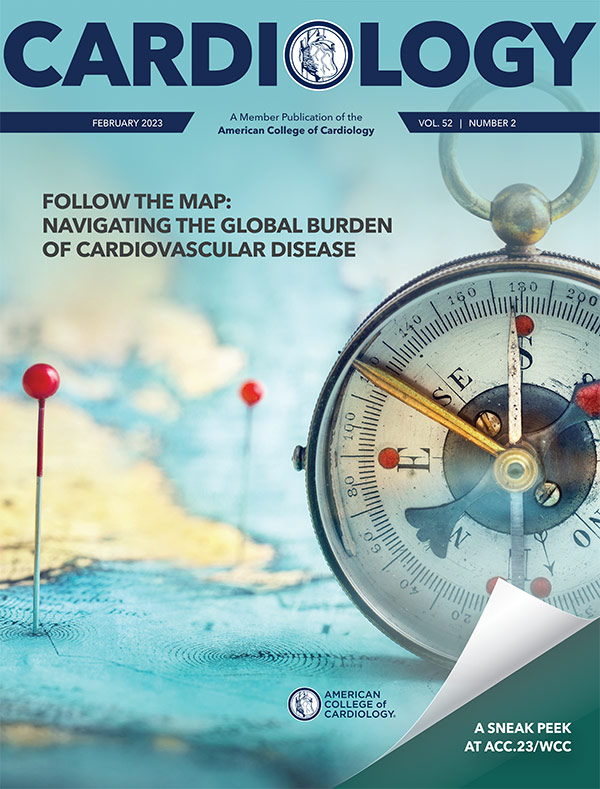For the FITs | Five Steps to Start Your Clinician-Educator Career

As the end of training approaches, Fellows in Training (FITs) who desire to remain in academic medicine may wonder what it takes to be a clinician-educator and whether this is the right career path. This question is one that I have been considering. In my pursuit for clarity, I spent time this year learning about what it means to be a clinician-educator.
The concept of a clinician-educator is relatively young in the history of medicine. It is thought to have originated in the 1980s when the medical education system was undergoing changes.1 Before this, all physicians were assumed to be teachers. In the years since, there have been physicians in academia who have chosen to distinguish themselves by pursuing education science, and they are commonly known as clinician-educators.1
Interestingly, there are two types: "Clinician-educator" (big C, little e) or "clinician-Educator" (little c, big E). Of note, there are many physicians, inside and outside traditional academic institutions, who are clinician-teachers and remain passionate about and invested in trainee education; this definition of clinician-educator does not apply to them.
"Clinician-educators" first and foremost are an excellent clinician. They have spent significant time and energy cultivating their clinical skills and spend time teaching trainees and passing on their clinical expertise. These are faculty whose primary focus is patient care, and this drives their teaching and scholarship efforts. In broad terms, they engage in bedside teaching and clinical mentoring, and scholarship efforts often focus on patient management such as case reports or book chapters.
On the other hand, a "clinician-Educator" is primarily an educator. She or he is driven by a focus on education and often uses educational pedagogy to guide the teaching of trainees. Scholarship efforts may be related to curriculum development or other education-related research topics. A Masters degree in Education is often of interest to further increase knowledge of teaching theories and methods.
As I learned more about being a clinician-educator, I wondered how one identifies their clinician-educator type. I realized that, at the end of the day, both "Clinician-educators" and "clinician-Educators" are clinicians who are passionate about teaching. While identifying your type can help guide career milestones to improve job satisfaction,2 this may not be necessary when embarking on this career path, as your interests may shift on this spectrum over time. Often experience in medical education helps clinician-educators understand which activities (i.e., bedside teaching, curriculum design, etc.) bring the most fulfillment and excitement. Here are some lessons I've learned from my own experience in medical education that I undertook to help me crystalize my own career goals within the clinician-educator pathway.


Get experience in teaching!
Be flexible with opportunities. Medical schools are eager to have residents and fellows volunteer their time to teach clinical skills to students. As a cardiology fellow, you have a variety of cardiology-specific (cardiac auscultation, procedural) and medicine skills (interviewing a patient, writing a history and physical, examining patients). In addition, you are a learner within the cardiology fellowship curriculum and can leverage your dual perspectives as both a learner and an educator. What areas for improvement exist, and could you work with your program leadership to propose novel curricular changes?3,4

Know when to be a student!
A recent survey found that only 17% of junior cardiology faculty reported receiving formal instruction in educational methodology or pedagogy while in medical training.3 Formal training can include workshops, certificates or advanced degrees in education. Seeking additional training in education will distinguish you from your peers.
Many residency and fellowship programs now have medical educator tracks where you can earn a Certificate in Education. I acquired a Certificate in Medical Education as a resident, and now as a fellow, I'm completing the Physician Teaching Pathway offered by my institution.
Keep an eye on your national societies. For example, ACC sponsored a 3T (Teaching Tomorrow's Teachers) program from 2016-2018 to train fellows on education skills such as persuasive public speaking, presentation design and feedback.5
Further education with a Masters of Education can be pursued (usually during early faculty years). FITs who resonate more with the "little c-Big E" mentality may find the additional education helpful in designing curriculum for adult learners, but the "big C-little e" may prefer to invest their time in bedside teaching. Furthermore, this additional degree is likely not as helpful for those pursuing private practice but would be important for academic careers and those considering formal leadership roles in graduate medical education.

Write it all down!
Create a filing system for all the medical education activities you're doing. Be sure to include the date, type of learner involved, number of learners, and any feedback you received from the session. If you are asked to give Grand Rounds, Morning Conference or any educational talk, save the Powerpoint too. Any teaching event that has to go on your calendar should be put in a "future Clinical Education Portfolio (CEP)/CV" document; once the event is done, you can move it over to your formal document. Remember to save all your (de-identified) evaluations from learners. I use Google Drive to save and manage these files, and I have a master document where I link the related documents (evaluations, Powerpoints) to make them easy to find. Click here to access my example.
Keeping these items organized makes it much easier to create your CEP later on, which can be used for hiring and promotions. Each institution has its own format, thus I recommend waiting to create your CEP after you've started your academic job. Click here to access an example of a CEP that pediatrics has published on Med Ed Portal.6

Find mentors!
Just like any other career path, a mentor is critically important. Medical education mentors can be fellow cardiologists, clinician-educators in other departments, or at other institutions.7 Professional societies such as the ACC and American Heart Association can be helpful with networking and finding these mentors.
A recent study showed that faculty who received mentorship were promoted, on average, earlier than those who were not mentored.8 I am fortunate to have mentors both at my current institution and at my prior institution, both within and outside of cardiology. Some I met through research, others I met through participating in medical education training curriculum. All have provided me with career advice and have been my sponsors at various timepoints. Medical education sponsors can open opportunities to participate in advanced conversations about curriculum and program development at both the institutional and national level.

Plan ahead!
When it comes time to find a job, your first position may not include salary support or protected time for teaching. This is something you can negotiate, especially if you have a body of work to defend your educational contributions. If you're interested in a Masters of Education, this is a great time to negotiate funding or protected time to complete the degree. Ask to interview with other clinician educators at the institution (in cardiology or in other divisions) to get a sense of the environment for clinician-educators. Familiarize yourself with the requirements for promotion and tenure for the clinician-educator track, and work with your mentor to create a plan for promotion.

Kristen E. Wong, MD, is a second-year cardiology fellow at Washington University in St. Louis, MO. She thanks her mentors: Melanie S. Sulistio, MD, FACC; Mustafa Husaini,MD, FACC; Prashanth Thakker, MD, FACC; Rachel Bonnema, MD; and Andrew M. Kates, MD, FACC, who have guided and supported her clinician-educator journey.
References
- Greenberg Larrie. The evolution of the clinician–educator in the United States and Canada: Personal reflections over the last 45 years. Academic Medicine 2018;93:1764-6.
- Chang A, Schwartz BS, Harleman E, et al. Guiding academic clinician educators at research-intensive institutions: A framework for chairs, chiefs, and mentors. J Gen Intern Med 2021;36:3113-21.
- Tummala L, Kaiser C, et al. Formalizing medical education in cardiology. J Am Coll Cardiol 2022;79:1639-43.
- Konerman M, Alpert C, Sinha S, et al. Learning to be a clinician-educator. J Am Coll Cardiol 2016;67:338-42.
- Alpert C, Sinha S, Cullen M, et al. Teaching tomorrow's teachers. J Am Coll Cardiol 2019;73:2900-3.
- Gusic M, Chandran L, Balmer D, D'Alessandro D, Baldwin C. Educator portfolio template of the Academic Pediatric Association's Educational Scholars Program. AAMC MedEd Portal 2007; August. Available here.
- Chen T. Launching a career as a clinician scholar: How to step forward into the spiral. Heart 2022;108:1580-1.
- Shafer K, Hira R, Sinha S, et al. Academic advancement in the current era. J Am Coll Cardiol 2019;73:620-3.
Keywords: ACC Publications, Cardiology Magazine, Care Team, Patient Care Team, Work-Life Balance, Cultural Diversity, Health Equity, Gender Equity
< Back to Listings

